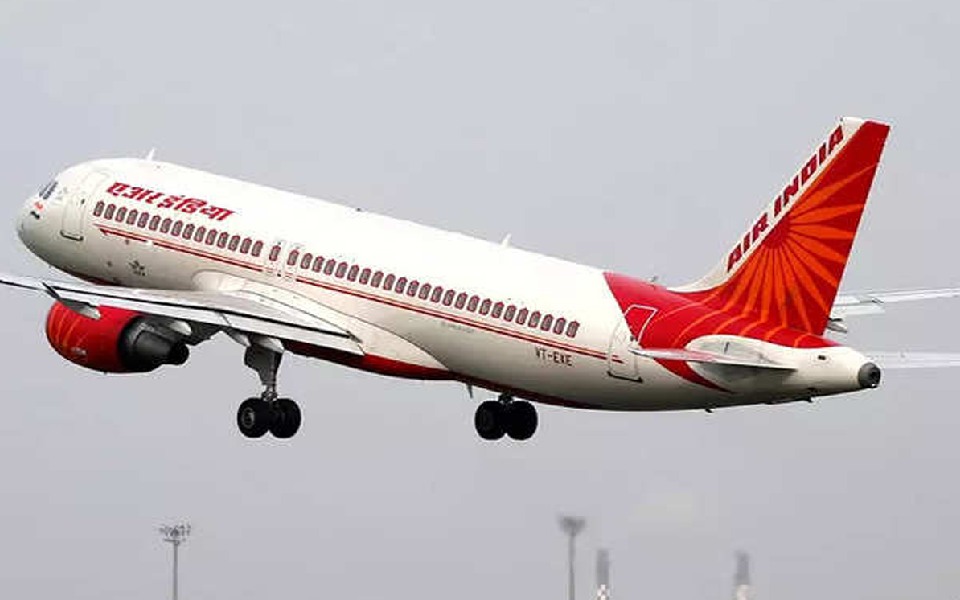Mumbai, Oct 30: Non-availability of aircraft due to maintenance issues has forced Tata Group-owned Air India to cancel some 60 flights on the India-US routes between November and December this year, according to an airline source.
The flights, which have been cancelled during the peak travel period, include services to San Francisco and Chicago, among others, the source said.
Air India, in a statement, said it has cancelled a "small" number of flights between November and December on account of delayed return of some aircraft from heavy maintenance and supply chain constraints, without naming the destinations.
It also said that affected customers have been "informed" and offered flights on other Air India group services operating on the same or adjacent days.
"Air India has cancelled some 60 flights to and from San Francisco, Washington, Chicago, Newark and New York between November 15 and December 31, as it does not have adequate wide-body aircraft to operate some of the flights to these destinations," the sources told PTI.
As part of this, Air India has cancelled 14 flights on the Delhi-Chicago route, 28 flights on the Delhi-Washington route, 12 flights between the Delhi-SFO route, four flights on the Mumbai-New York route as well as two flights on the Delhi-Newark route, the sources said.
"Air India is facing delays in getting aircraft from the MRO operator it is sending to for maintenance. Then some of its wide-body planes are also grounded due to technical issues. This has resulted in the shortage of aircraft and consequently in flight cancellations," they added.
"Due to the delayed return of some aircraft from heavy maintenance and supply chain constraints resulting in a temporary reduction in operating fleet, Air India regrets that a small number of flights have been cancelled between now and end-December," an Air India spokesperson said.
Affected customers have been informed and offered flights on other Air India group services operating on the same or adjacent days, a free change to any other date or a full refund, the spokesperson said, adding, "Air India sincerely regrets the inconvenience caused by this constraint beyond our control".
Air India currently operates five flights between Delhi and Washington, while Delhi-JFK (New York) and Mumbai-JFK routes have seven flights per week. On the Delhi-Chicago route also, the airline operates seven flights per week.
Air India operates flights to San Francisco from three destinations -- Delhi, Mumbai and Bengaluru.
Of this, Air India operates 11 flights per week, including one daily service on the Delhi-SFO route, while from Mumbai and Bangalore, it operates four flights per week.
Besides, Air India also operates three flights per week to Newark from Delhi and Mumbai.
Let the Truth be known. If you read VB and like VB, please be a VB Supporter and Help us deliver the Truth to one and all.
New York (AP): President Donald Trump is opening a new salvo in his tariff war, targeting films made outside the US.
In a post on Sunday night on his Truth Social platform, Trump said he has authorized the Department of Commerce and the Office of the US Trade Representative to slap a 100% tariff “on any and all Movies coming into our Country that are produced in Foreign Lands.”
“The Movie Industry in America is DYING a very fast death," he wrote, complaining that other countries “are offering all sorts of incentives to draw" filmmakers and studios away from the US. "This is a concerted effort by other Nations and, therefore, a National Security threat. It is, in addition to everything else, messaging and propaganda!”
It wasn't immediately clear how any such tariff on international productions could be implemented. It's common for both large and smaller films to include production both in the US and other countries. Big-budget movies like the upcoming “Mission: Impossible – The Final Reckoning," for instance, are shot around the world.
Incentive programs for years have influenced where movies are shot, increasingly driving film production out of California and to other states and countries with favorable tax incentives, like Canada and the United Kingdom.
Yet tariffs are designed to lead consumers toward American products. And in movie theaters, American-produced movies overwhelmingly dominate the domestic marketplace.
China has ramped up its domestic movie production, culminating in the animated blockbuster “Ne Zha 2” grossing more than USD2 billion this year. But even then, its sales came almost entirely from mainland China. In North America, in earned just USD20.9 million.
The Motion Picture Association didn't immediately respond to messages Sunday evening.
The MPA's data shows how much Hollywood exports have dominated cinemas. According to the MPA, the American movies produced USD22.6 billion in exports and USD15.3 billion in trade surplus in 2023.
Trump has made good on the “tariff man" label he gave himself years ago, slapping new taxes on goods made in countries around the globe. That includes a 145% tariff on Chinese goods and a 10% baseline tariff on goods from other countries, with even higher levies threatened.
By unilaterally imposing tariffs, Trump has exerted extraordinary influence over the flow of commerce, creating political risks and pulling the market in different directions. There are tariffs on autos, steel and aluminum, with more imports, including pharmaceutical drugs, set to be subject to new tariffs in the weeks ahead.
Trump has long voiced concern about movie production moving overseas.
Shortly before he took office, he announced that he had tapped actors Mel Gibson, Jon Voight and Sylvester Stallone to serve as “special ambassadors" to Hollywood to bring it "BACK—BIGGER, BETTER, AND STRONGER THAN EVER BEFORE!”
US film and television production has been hampered in recent years, with setbacks from the COVID-19 pandemic, the Hollywood guild strikes of 2023 and the recent wildfires in the Los Angeles area. Overall production in the US was down 26% last year compared with 2021, according to data from ProdPro, which tracks production.
The group's annual survey of executives, which asked about preferred filming locations, found no location in the US made the top five, according to the Hollywood Reporter. Toronto, the U.K., Vancouver, Central Europe and Australia came out on top, with California placing sixth, Georgia seventh, New Jersey eighth, and New York ninth.
The problem is especially acute in California. In the greater Los Angeles area, production last year was down 5.6% from 2023 according to FilmLA, second only to 2020, during the peak of the pandemic. Last, October, Gov. Gavin Newsom proposed expanding California's Film & Television Tax Credit program to USD750 million annually, up from USD330 million.
Other US cities like Atlanta, New York, Chicago and San Francisco have also used aggressive tax incentives to lure film and TV productions. Those programs can take the form of cash grants, as in Texas, or tax credits, which Georgia and New Mexico offer.
“Other nations have been stealing the movie-making capabilities from the United States,” Trump told reporters at the White House on Sunday night after returning from a weekend in Florida. “If they're not willing to make a movie inside the United States we should have a tariff on movies that come in."


_vb_19.jpeg)


